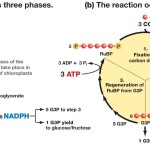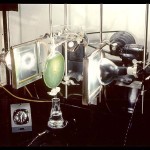SciTech Tuesday: Birthday of Melvin Calvin, Biochemist
Today marks the birthday of Melvin Calvin, the biochemist for whom the eponymous photosynthesis cycle familiar to many biology students is named. Calvin was a fearless scientist known for his insatiable curiosity and skill in posing meaningful questions. While he was a chemist by education and training, Calvin boldly delved into new fields including carcinogenesis, the synthesis of biofuels, lunar geology and the development of synthetic membranes.
Dr. Calvin’s diverse interests and endless curiosity led him to the University of California’s Radiation Laboratory directed by Ernest Lawrence. Using the 60-inch cyclotron and new isotopes produced from Hanford and Oak Ridge National Laboratories, Calvin led the effort to find medical and biochemical applications for the radioactive byproducts of the Manhattan Project.
Calvin used radioactive carbon-14 to trace the path of carbon during photosynthesis. Plants use sunlight in combination with carbon dioxide and water to make sugar and oxygen. Using the carbon-14 isotope, Calvin mapped the entire chemical process of photosynthesis now known as the Calvin cycle. Most significant in this research was the discovery that sunlight activates chlorophyll, the green pigment in all plants and the site of photosynthesis, rather than carbon dioxide. For his work Dr. Calvin earned the Nobel Prize for Chemistry in 1961.
- The Calvin cycle. Image courtesy of the University of Illinois at Chicago.
- The green algae “lollipop” apparatus used to grow algae before it was injected with carbon-14. Image courtesy of the University of California, Berkeley.
- Dr. Melvin Calvin in the radiation laboratory with algae slants in the background. Image courtesy of the University of California, Berkeley.
Post by Annie Tête, STEM Education Coordinator







Leave a Reply